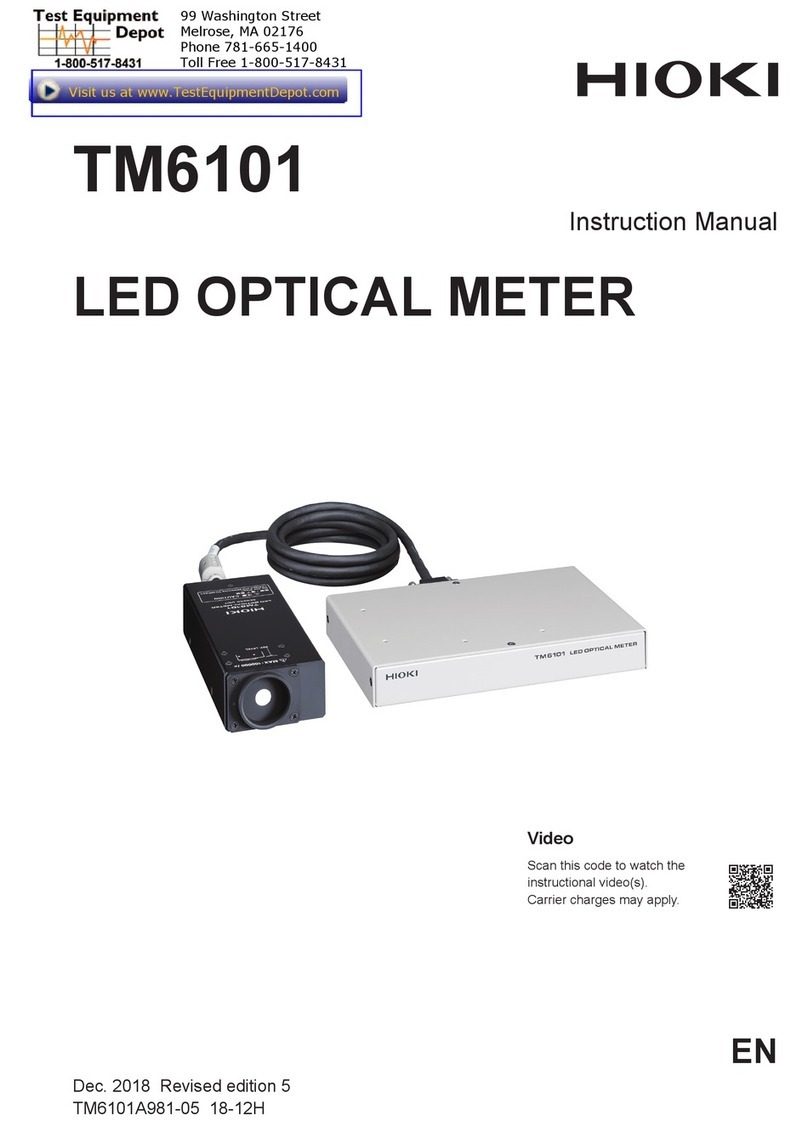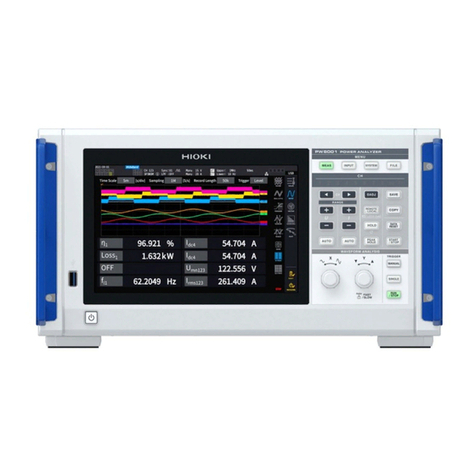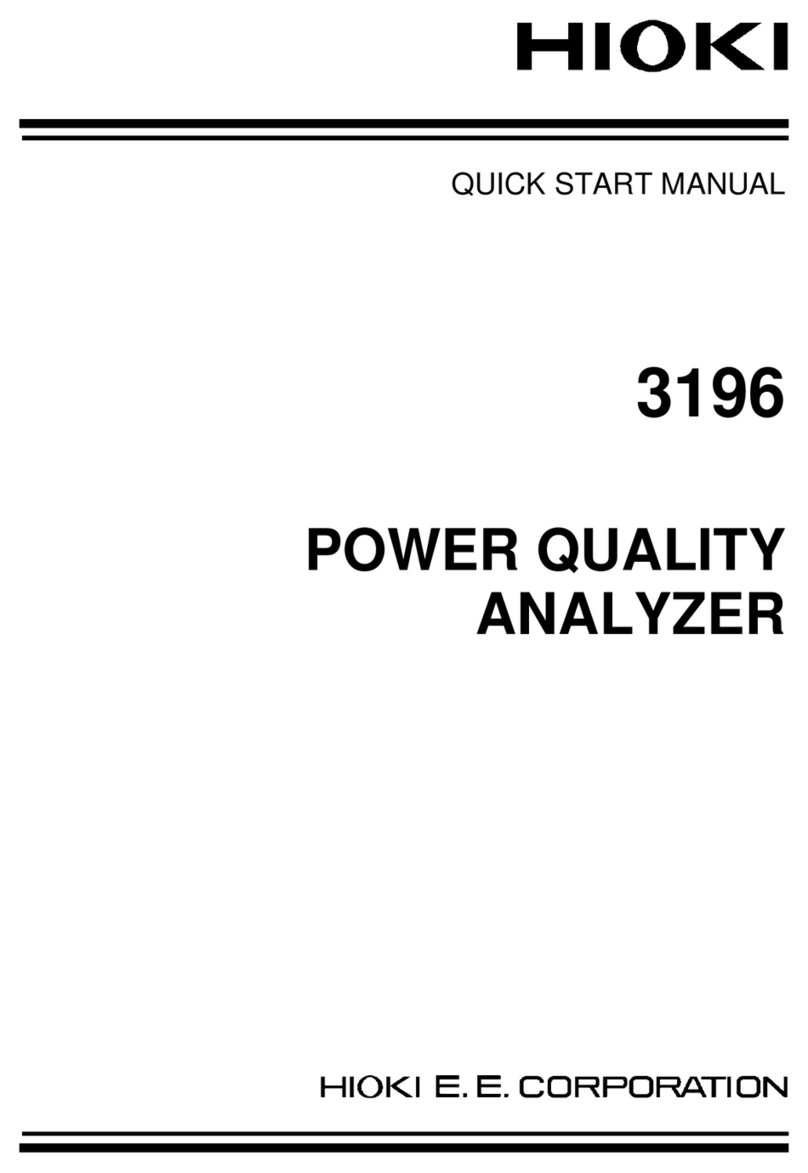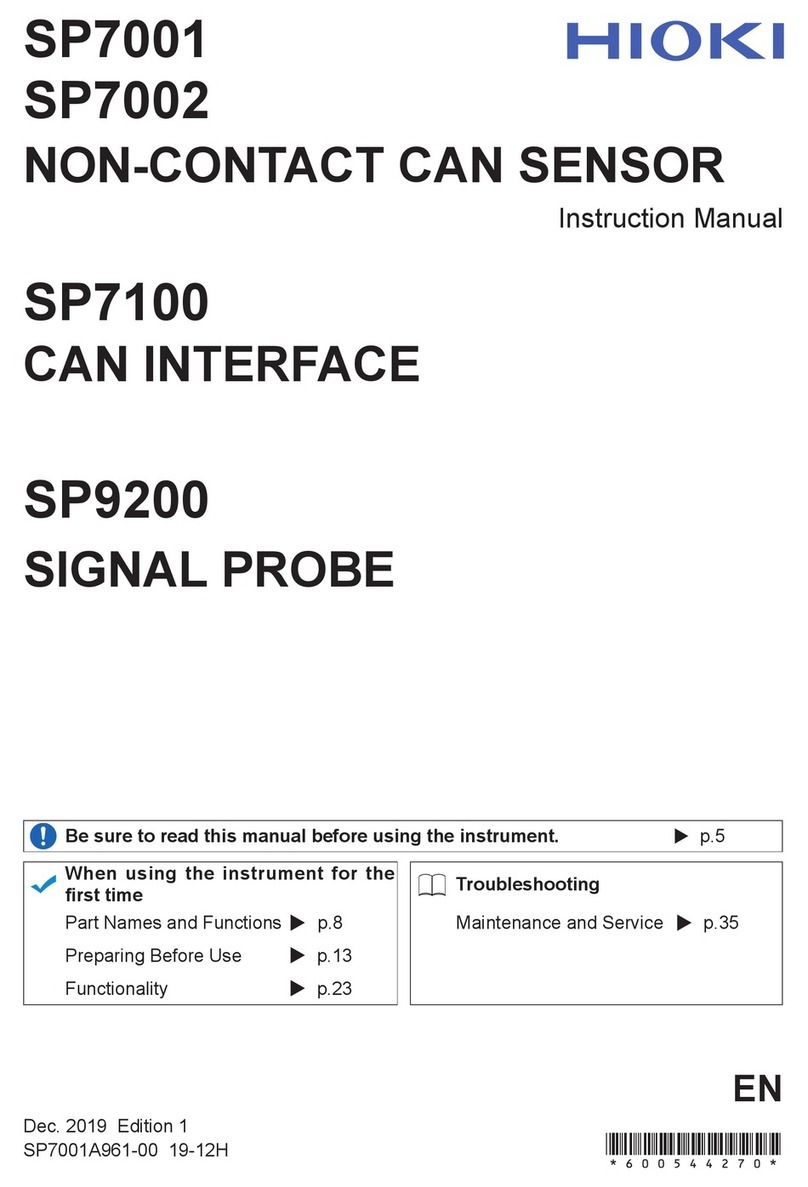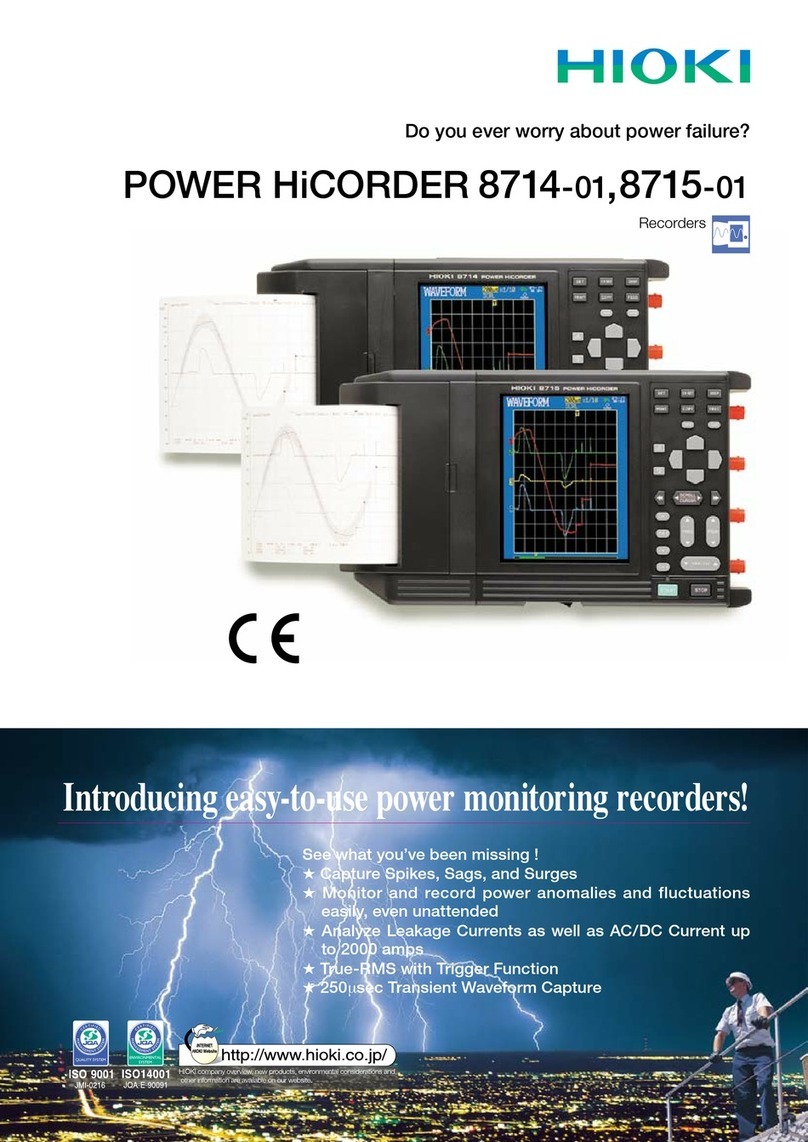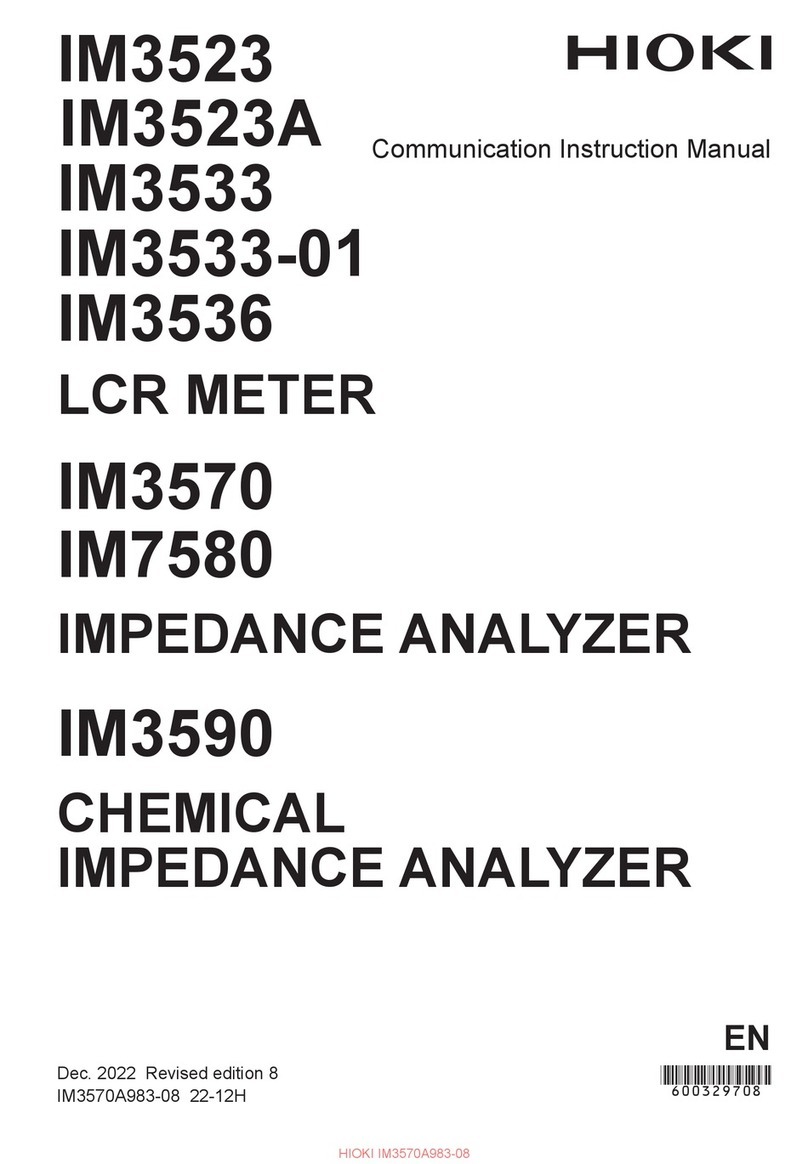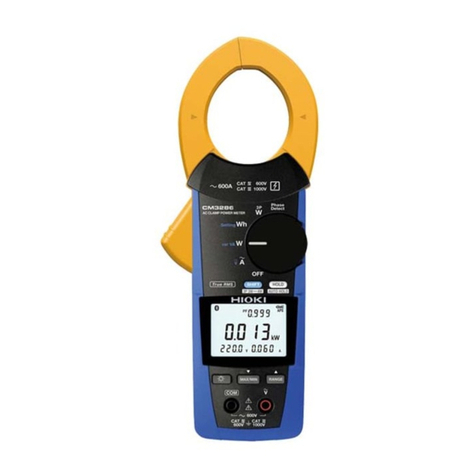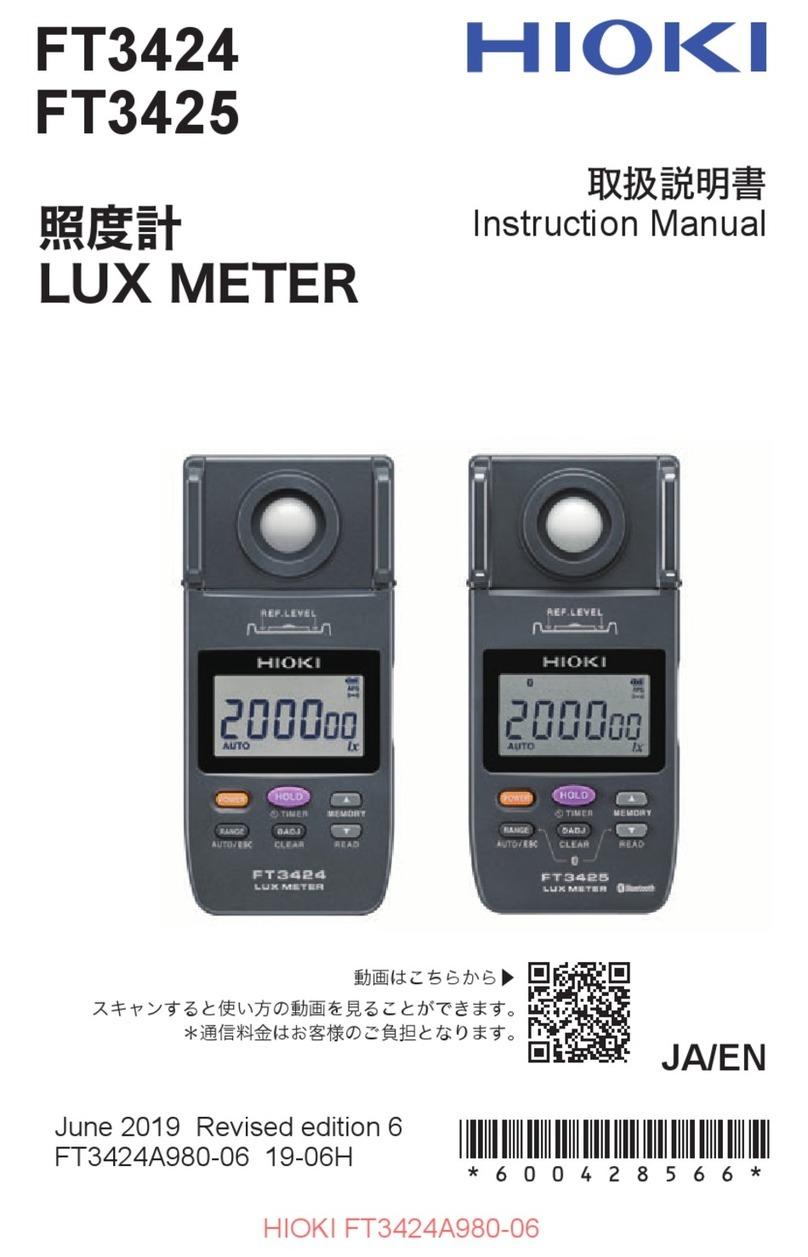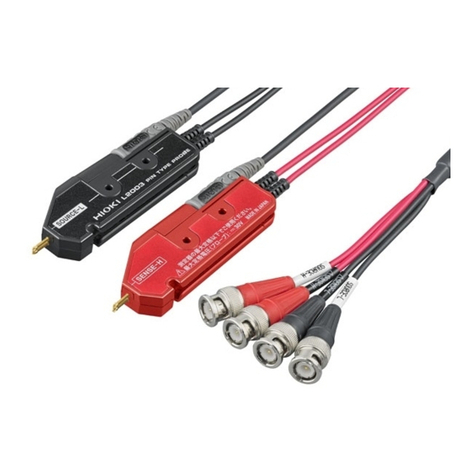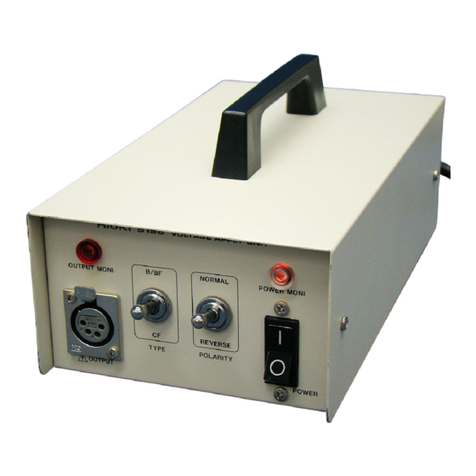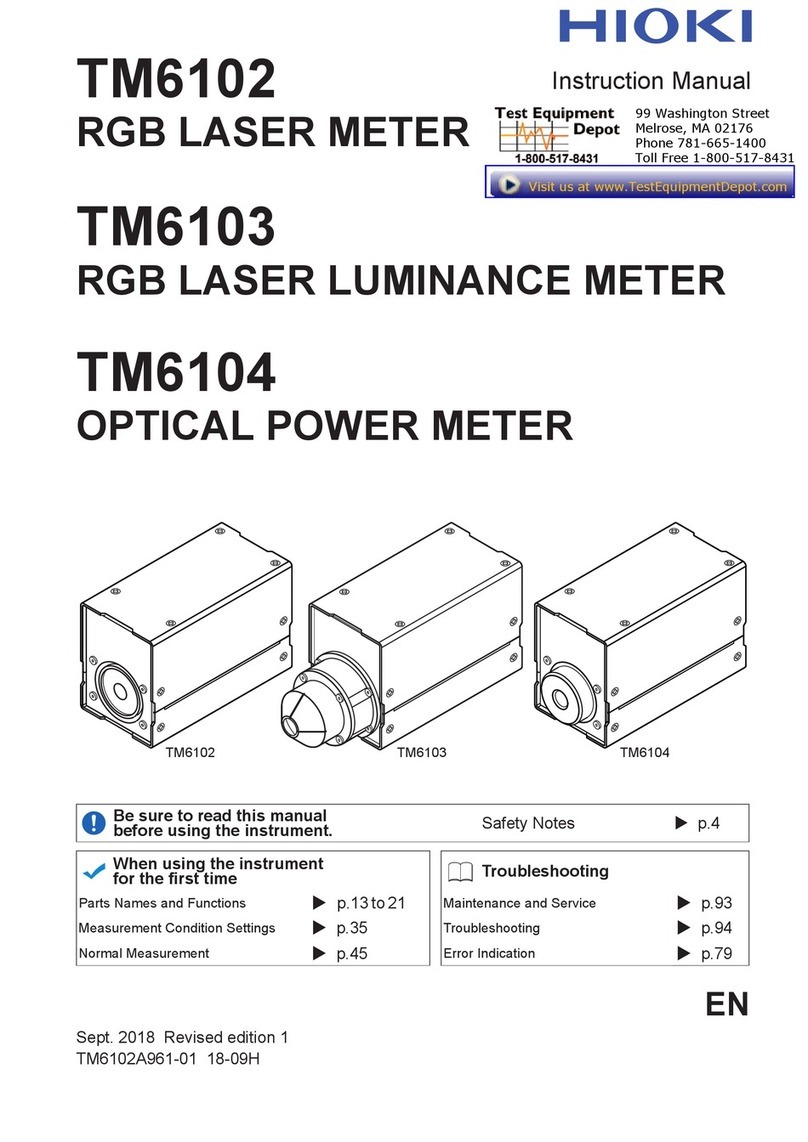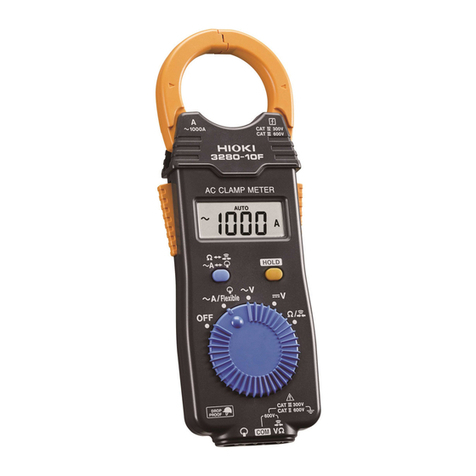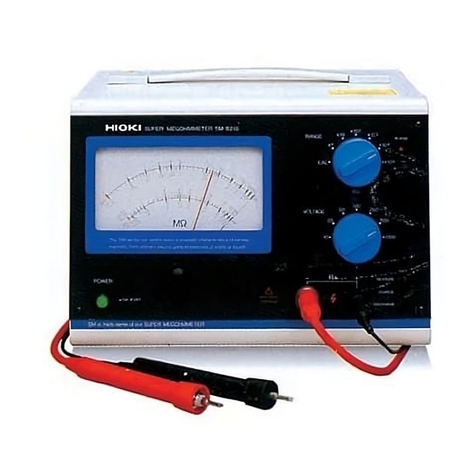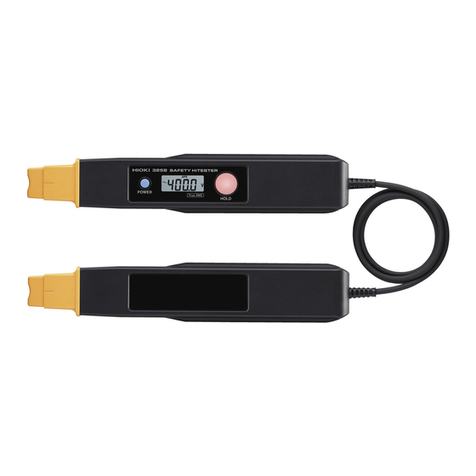
Chapter 3 Measurement Procedures 43
3.1 Preparations ..........................................43
3.2 Current Measurement ...........................45
3.2.1 Measuring DC Current (DC A) ..........46
3.2.2 Measuring AC Current (AC A) ..........47
3.2.3 Measuring AC + DC Current (AC+DC A)
...........................................................49
3.2.4 Bar Graph .........................................50
3.2.5 Peak Measurement ...........................51
3.2.6 Output Function
(Current Measurement) .....................53
3.3 Frequency Measurement ......................57
3.3.1 Frequency Measurement ..................57
3.3.2 Output Function
(Frequency Measurement) ................58
3.4 Auto-Zero Adjustment Function .............60
3.5 Data Hold Function ................................61
3.6 Changing the Screen Update Rate .......61
3.6.1 SLOW Mode .....................................61
3.6.2 FAST Mode .......................................62
3.7 Recording Function ...............................63
3.7.1 Measurement Reading ......................63
3.7.2 Display of Elapsed Time ...................64
3.7.3 Interrupting the Recording Function ..64
3.7.4 Clearing Recorded Data ...................64
3.7.5 Disabling the Recording Function .....65
3.8 Measurement Method
Switching Function ................................66
3.8.1 RMS Measurement ...........................66
3.8.2 MEAN Measurement .........................66
3.9 Measurement Response Speed
Switching Function ................................67
